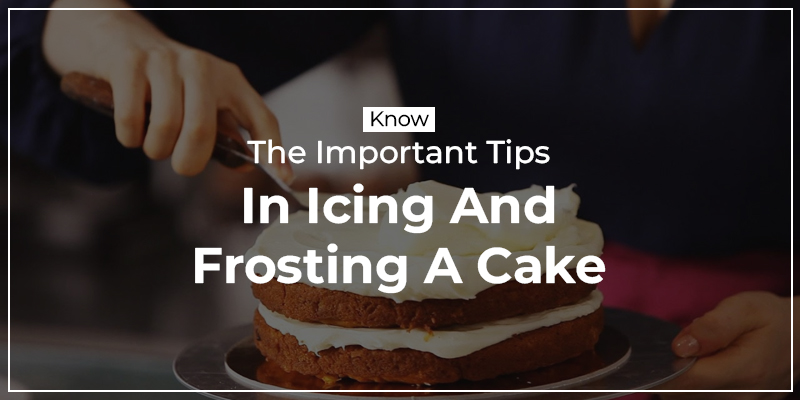When baking a cake, the icing and frosting are crucial in enhancing its flavour, appearance, and overall appeal. The right technique and attention to detail can significantly affect the final result. Here are some important tips to keep in mind when icing and frosting a cake:
Cool the cake completely:
At Baking Classes in Chennai we suggest to our students that before you start icing and frosting, ensure that your cake has cooled completely. Warm cakes can cause the icing to melt and slide off, leading to an uneven and messy appearance.
Level the cake:
Use a long serrated knife or a cake leveller to trim the top if it has domed or unevenly risen during baking. This will help create a flat surface for even frosting applications.
Crumb coat:
Applying a crumb coat is an essential step that helps seal the crumbs and provide a smooth foundation for the final layer of frosting. Spread a thin layer of icing over the entire cake, covering the sides and top. Chill the cake in the refrigerator for 15-20 minutes to allow the crumb coat to set.
Use the right tools:
Invest in quality icing tools like an offset spatula and a cake turntable. An offset spatula allows for smooth and precise spreading of icing, while a cake turntable enables easy rotation and access to all sides of the cake.
Choose the right icing consistency:
The consistency of your icing is crucial for achieving a flawless finish. Best Baking Classes in Chennai aims for a medium consistency that is easy to work with but not too runny for spreading and smoothing. Adjust the consistency by adding more powdered sugar for a stiffer icing or a few drops of milk for a softer one.
Start with the sides:
Begin by icing the sides of the cake. Hold the spatula at a slight angle and apply a generous amount of icing to the side, spreading it in an even layer from the bottom to the top. Use long, smooth strokes for a professional finish.
Frost the top:
Once the sides are iced, move on to the top of the cake. Place a large dollop of icing in the centre and spread it gently towards the edges, working in a circular motion. Ensure the entire top surface is covered and levelled.
Smooth the icing:
Hold the spatula parallel to the cake’s sides and rotate the turntable slowly while applying gentle pressure to the icing to achieve a smooth finish. Continue this motion until the icing is evenly distributed and smooth.
Decorate creatively:
After the cake is frosted, you can add decorative elements such as piped borders, rosettes, or other designs. Experiment with different piping tips to create various textures and patterns.
Practise patience:
Professional Bakery Courses In Chennai always suggest you to take your time and be patient throughout the process. You can always scrape off the icing and start again if you make a mistake. Remember, practice makes perfect, so don’t be discouraged if your first attempt isn’t flawless.
Chill the cake:
Once it is frosted and decorated, refrigerate it for at least 30 minutes to allow the icing to set. This will make it easier to slice and serve without smudging the design.
Serve at room temperature:
Before serving, let the cake sit at room temperature for some time to allow the flavours to meld and the icing to soften slightly. Cold cake can have a muted flavour and a denser texture.
By following these important tips, you’ll be well on your way to achieving beautifully iced and frosted cakes that taste amazing and look professionally done. Practice, have fun, and let your creativity shine through as you experiment with different techniques and designs.



